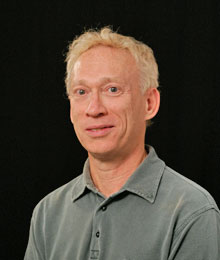Reprinted from Evidence-based Living, a project of the Bronfenbrenner Center for Translational Research.
Diversity in sexual orientation—whether gay, straight, bisexual, or somewhere in between—has sparked long-standing controversies across the globe. In the United States, recent debates have centered around the civil rights for same-sex couples. In many other countries, homosexuality is considered illegal; in some, it’s punishable by death.
Often, these social and political debates refer to the “science of homosexuality” —or what we really know about why individuals are attracted to particular sexes. If you’ve followed these debates, you’ve likely heard people refer to the idea that homosexuality is genetic, or that it is a choice people make. But what does science really tell us about sexual orientation?
A new systematic review and commentary published in the journal Psychological Science in the Public Interest takes a sweeping look at what the evidence says about homosexuality and sexual orientation in general. While the articles draw some conclusions about the causes and connections that lead to different sexual orientations, they also point out what we don’t know about homosexuality.
Here’s what we do know:
- Across research papers, somewhere between 2 and 11 percent on people report experiencing same-sex attractions. The exact number varies depending on how the question is asked and how the research paper categorizes homosexuality.
- Children who do not conform to gender identities—for example, boys who wear dresses or girls who act as “tomboys”—are more likely to identify as not heterosexual later in life. This applies to cultures across the globe, no matter what their gender roles.
- Political attitudes about sexual orientation are connected to people’s understanding of the causes of same-sex behavior. People who believe that homosexuality is immoral tend to believe that sexuality is a choice or is influenced by social factors. Those who support free expression of sexuality tend to believe there are biological factors that influence sexual orientation.

In a commentary published with the systematic review, Cornell Human Development Professor Ritch Savin-Williams offers evidence of a continuum of sexual orientation that includes a wide variety of classifications, including people who are “mostly straight” with a small degree of same-sex attraction or people who are “mostly gay or lesbian” with some attraction to opposite-sex partners. Taking into account these groups, the prevalence of people experiencing at least some same-sex feelings may be much broader than is represented in many studies.
“Traditionally, we’ve thought of sexual orientation in terms of three categories: you are or identify as straight, bisexual, or gay/lesbian,” he explained. “But recent research from a different perspective strongly suggests that this view mischaracterizes a significant number of people who have varying degrees of opposite-sex and same-sex romantic and sexual attractions and the ratio might well vary across contexts and time. That is, rather than categories there is a spectrum of sexualities and the in between points along a continuum constitute perhaps a quarter of all individuals, especially if you consider their infatuations, crushes and romantic feelings. Recognizing this reality has the potential to subvert any us-versus-them perspective, thus promoting the sexual and romantic commonality we have with each other.”
What the data do not tell us definitively is the why people have different sexual orientations. But there is evidence that there are multiple contributing factors, some of which we don’t yet understand.
The most scientifically plausible theories, according to the review, propose that sexual orientation is a product of biology and social factors, to varying degrees for different people.
For example, there is credible evidence across cultures that, for men, their birth order has some effect on their sexual orientation. Men with more older brothers are significantly more likely to identify as gay compared with first-born sons or men with older sisters. This is likely related to evidence that prenatal hormones affect the sexual orientation of boys. There is also clear evidence that specific genetic profiles contribute to sexual orientation, but likely interact with other factors.
What’s the take-home message here? There is a lot we don’t yet understand about how individuals develop their gender identity and sexual orientation. But it is absolutely clear that there are a wide variety of factors—both biological and social—that play into each person’s sexual identity.

